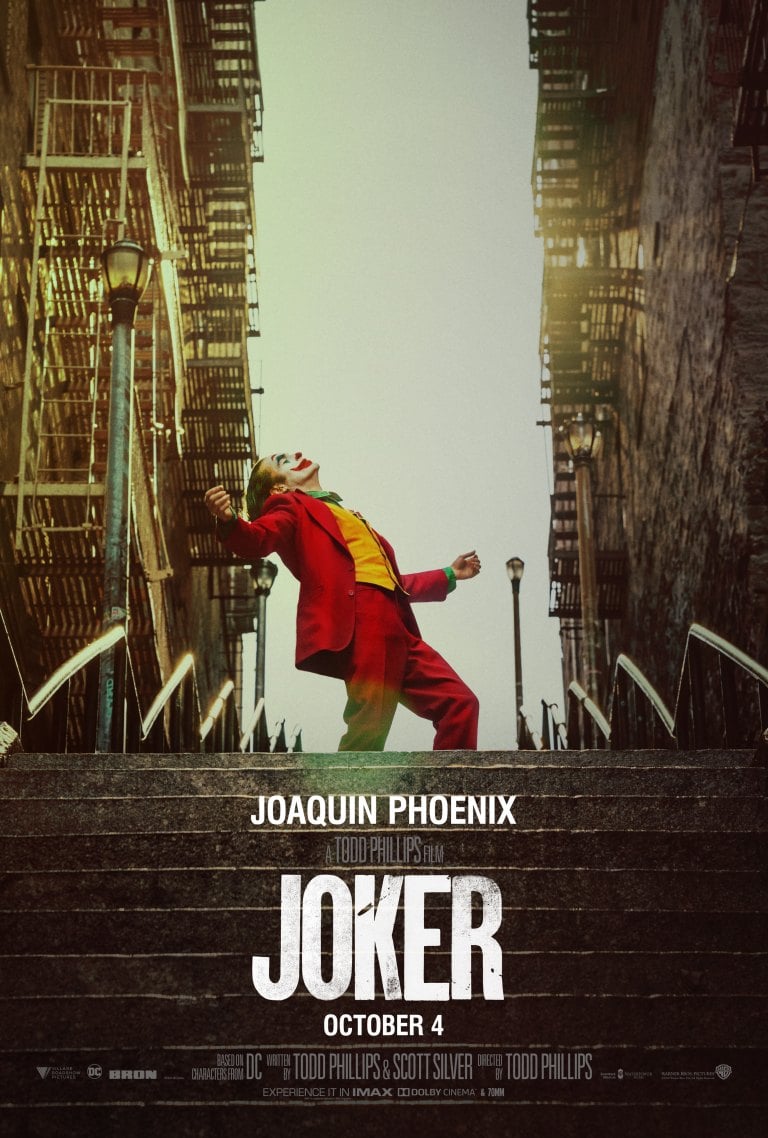Warning: spoilers ahead.
Thursday night. I’m tucked in the back of theater, wrapped in a fleece jacket, my eyes glued to the screen as Arthur Fleck chases a man down the pristine white halls of Arkham Hospital, leaving a bloody trail of footprints along the immaculate floor. Suddenly, the words “The End” appeared. For a moment, it seemed like the audience was silent. It was as if we were confused about what we just witnessed. Some of us began clapping, others mouthed a singular “what’” in verbal perplexion.
As I ambled out of the theater, I pondered over the film. “Joker” is, at its core, a two-hour character study about Arthur Fleck (exquisitely portrayed by Joaquin Phoenix) — a troubled, working class man who transforms from aspiring comedian into the green-haired Clown Prince of Crime. But what makes “The Joker” so intriguing to the viewer is Arthur’s mental illness that plagues him with severe delusion, especially when his seven medications are cut off. He struggles to dissociate facts from fiction.
The character of Arthur Fleck likely takes after the concept of the unreliable narrator chronicled in the William Riggan’s novel “Picaros, Madmen, Naifs and Clowns: The Unreliable First-Person Narrator,” a novel coincidentally published in 1981 — the same year that “Joker” takes place. In the novel, Riggan discusses the types of unreliable narrators within fiction, particularly the Clown and the Madman. The Clown is unreliable because he toys with the audience and twists the story into something colorful and less serious, while the Madman cannot be trusted because his senses are erratic and reckless. Both of these unreliable narrators are reflected in “Joker”and are relevant to Arthur’s active imagination.
For instance, take his falsely envisioned relationship with neighbor Sophie (Zazie Beetz), who he first meets on the apartment elevator accompanied by her son. We see them smile at one another and gesticulate shooting themselves with an imaginary gun. We see him barge into her apartment in the middle of the night and kiss her. We see them at the comedy club and a diner and at the hospital after his mother suffers a stroke. For such a limited timeline, we might wonder how their relationship escalated so quickly. Quickly that is, until we see the distraught and frightened look on Sophie’s face upon finding Arthur in her apartment. If that wasn’t enough to convince us that it was all an illusion, the film takes us back to the moments to show us that Arthur was, indeed, alone the whole time.
So what does this mean for the rest of the film? Are we supposed to believe the events that transpire next? If Arthur can’t be trusted, what’s fact and what’s fiction? At the end of “Joker” it seems that even the “Batman” super villain himself doesn’t know what’s real. Has he actually been imprisoned for murdering Murray Franklin on live television and subsequently inciting anarchic violence throughout the Gotham streets? Or is he merely recounting to the Arkham social worker (and to us) his own distorted version?
An underlying clue that hints at the answer to this question lies in the setting of Arkham State Hospital itself. Toward the middle of the film, Arthur ventures into Arkham to verify the medical records of his mother. In this scene, Arkham State Hospital is depicted as gloomy and squalid with dun-colored walls. However, at the very end of the film, Arkham looks much different: bright and spotless with clean white walls.
Sitting across from the social worker, Arthur begins to laugh. He tells her that he was thinking of a joke, but that she “wouldn’t get it.” At the beginning, Arthur shares the fact that he has “negative thoughts,” shedding light on why much of Gotham seems so gloomy and squalid throughout the film. Could it be that Arthur is narrating events that occurred within his head? Was everything just some sick joke? That’s a possibility. After all, both scenes have clocks that read the same exact time: 11:12. It’s also a possibility that the final scene in Arkham takes place much earlier (which becomes less likely with the mention of Thomas Wayne’s death) or much later than the other events of the film. Likewise, there’s even the chance that Arthur isn’t lying at all and that everything occurred exactly as portrayed.
Another way to look at the “Joker” ending is to compare it with Martin Scorcese’s 1976 classic “Taxi Driver,” where main character Travis Bickle, outraged by the filth of his New York City, is inspired to commit violence that he, like Arthur, is praised for. Furthermore, “Taxi Driver” ends on a similarly ambiguous note, in which Travis drops his former love Betsy home, refuses to let her pay her fare, and drives away with a smile. Despite all the sequence’s dreamlike qualities, screenwriter Paul Schrader has denied that it only occurs in the protagonist’s head. So if “Joker” also ends on a happy note (at least in Arthur’s mind, just as in Travis’s), does that mean that it truly happened as well?
While the endings of both films may be obscure, one thing is clear: The ending leaves us in the same position as Arthur and Travis, attempting to dissect truth from fiction. When it comes to these unresolved questions, it’s ultimately up to us as viewers to decide.
Contact Rathi Anandu at rathi29 ‘at’ stanford.edu.
